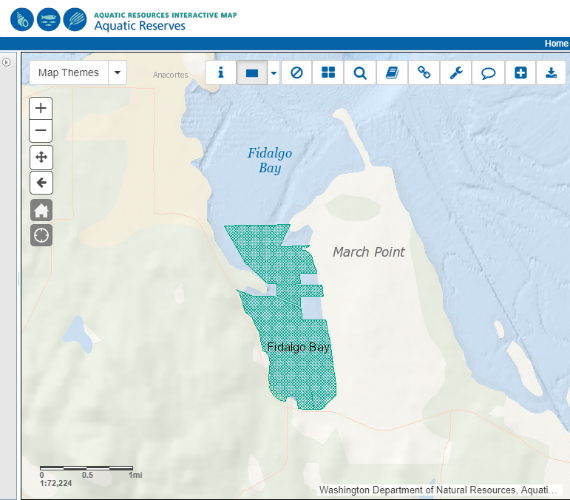Fidalgo Bay Aquatic Reserve
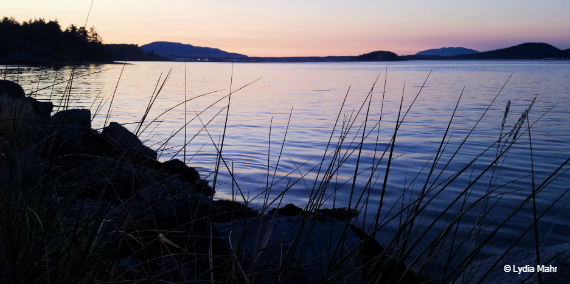
About the Aquatic Reserve
Fidalgo Bay, located just east of the City of Anacortes, is part of an ancient delta of the Skagit River. It is characterized by expansive eelgrass beds, tidal flats, salt marshes and pocket estuaries. In 2008, Fidalgo Bay was designated as an aquatic reserve to preserve these essential habitats and the diverse species that use the area.
Fidalgo Bay Aquatic Reserve At-A-Glance
- Designated in 2008
- Size - 781 acres of state-owned aquatic lands
- Significant species - Pacific herring, surf smelt and Olympia oysters
- Important habitats - Eelgrass beds, salt marshes, tidal flats and pocket estuaries
- Management Plan (2019)
- Commissioner's Order (2008)
Click here or on the image above to launch the Aquatic Reserves Program Data Viewer.
Species and Habitats
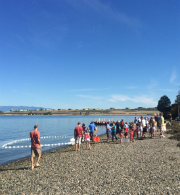
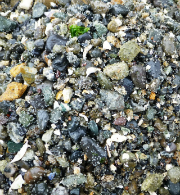
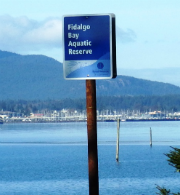
Within Fidalgo Bay Aquatic Reserve you’ll find tidal flats, salt marshes, pocket estuaries, sandy spits and expansive native eelgrass beds— essential habitats for the reproductive, foraging, and rearing success of many fish and bird species.
Water birds use the reserve as an important stopover on their migratory routes. Surf smelt, a forage fish species, spawn on the sand and gravel beaches in the bay, and their eggs are often visible among the pebbles along the shoreline. Fidalgo Bay is also one of 21 areas in Puget Sound where Pacific herring, another forage fish species, are known to spawn on submerged vegetation. In addition, Fidalgo Bay is the location of a multi-partner project to restore native Olympia oyster beds in Puget Sound.
Citizen Science and Stewardship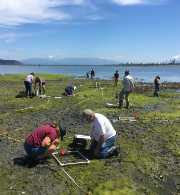
A Citizen Stewardship Committee organizes volunteer surveys of forage fish spawning habitat, intertidal species and marine birds at Fidalgo Bay Aquatic Reserve.
The committee also works to educate others about nearshore ecology, the Aquatic Reserve's condition, and planning issues that affect the reserve. For volunteer opportunities and more information on how to get involved visit the Fidalgo Bay committee.
Citizen Science Reports
- 2023 Forage Fish Beach Spawning Survey Report
- 2022 Forage Fish Beach Spawning Survey Report
- 2021 Forage Fish Beach Spawning Survey Report
- 2020 Forage Fish Beach Spawning Survey Report
- 2019 Forage Fish Beach Spawning Survey Report
- 2016-2018 Forage Fish Beach Spawning Summary Report
- 2013-2018 Forage Fish Beach Spawning Summary Report
- 2018 Forage Fish Beach Spawning Survey Report
- 2018 Intertidal Monitoring Report and Appendices
- 2018 Bird Survey Report and Appendices
- 2017 Forage Fish Beach Spawning Survey Report
- 2016 Forage Fish Beach Spawning Survey Report
- 2014-2015 Forage Fish Beach Spawning Survey Report
- 2013-2015 Intertidal Monitoring Report
- 2013-2014 Forage Fish Beach Spawning Survey Report
Science and Monitoring
Explore science and monitoring projects conducted on the Fidalgo Bay Aquatic Reserve in the Aquatic Reserves StoryMap Collection. In addition, the Aquatic Reserves Program Data Viewer is an interactive map with monitoring data collected by the Aquatic Reserves Program and Citizen Stewardship Committees. Click here to view the interactive map
Reports and Links
- Restoration of the Native Oyster, Olympia oyster (Ostrea lurida), in Fidalgo Bay, Padilla Bay and Cypress Island (Dinnel, 2016)
- Eelgrass abundance and depth distribution at Fidalgo Bay (Gaeckle, 2009)
- Fidalgo Bay Watershed Sampling (Samish Indian Nation, 2008)
Preservation and Restoration
Skagit Land Trust Acquisition and Donation
In 1999 Skagit Land Trust acquired 450 acres of tidal property in south Fidalgo Bay. The Trust placed a conservation easement on the property, ensuring that it is managed primarily to preserve habitat for fish and wildlife. These tidelands were then gifted to the state for DNR to manage. In 2006 the Trust was able to purchase and donate an additional 82 acres to DNR, also protected through the conservation easement. The aquatic lands donated by the Trust are now managed by DNR as part of the Fidalgo Bay Aquatic Reserve. Skagit Land Trust continues to support the aquatic reserve through the protection and restoration of Fidalgo Bay shoreline and streams that flow into the Bay.
- 1999 Skagit Land Trust Conservation Easement
- 2006 Skagit Land Trust Amended Conservation Easement
- Conservation Easement Map
West March Point Restoration
In 2010, the Skagit River System Cooperative, with help from multiple partners, coordinated a restoration project to restore the beach along March’s Point on the east side of Fidalgo Bay. The goal of the project was to replace lost sediments, rebuild the beach slope and improve habitat for forage fish spawning. Learn more about the project here.
Reports and Links

